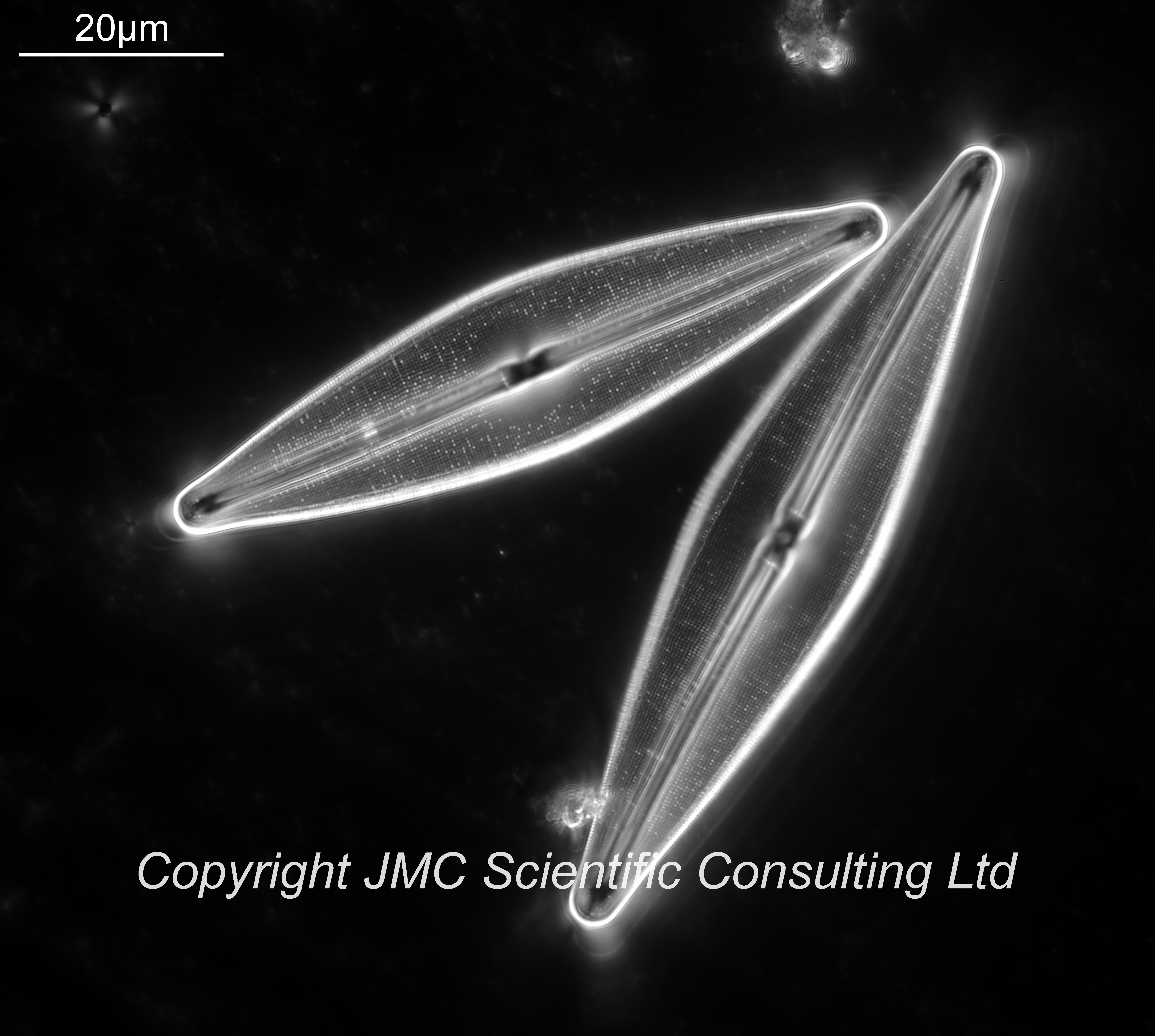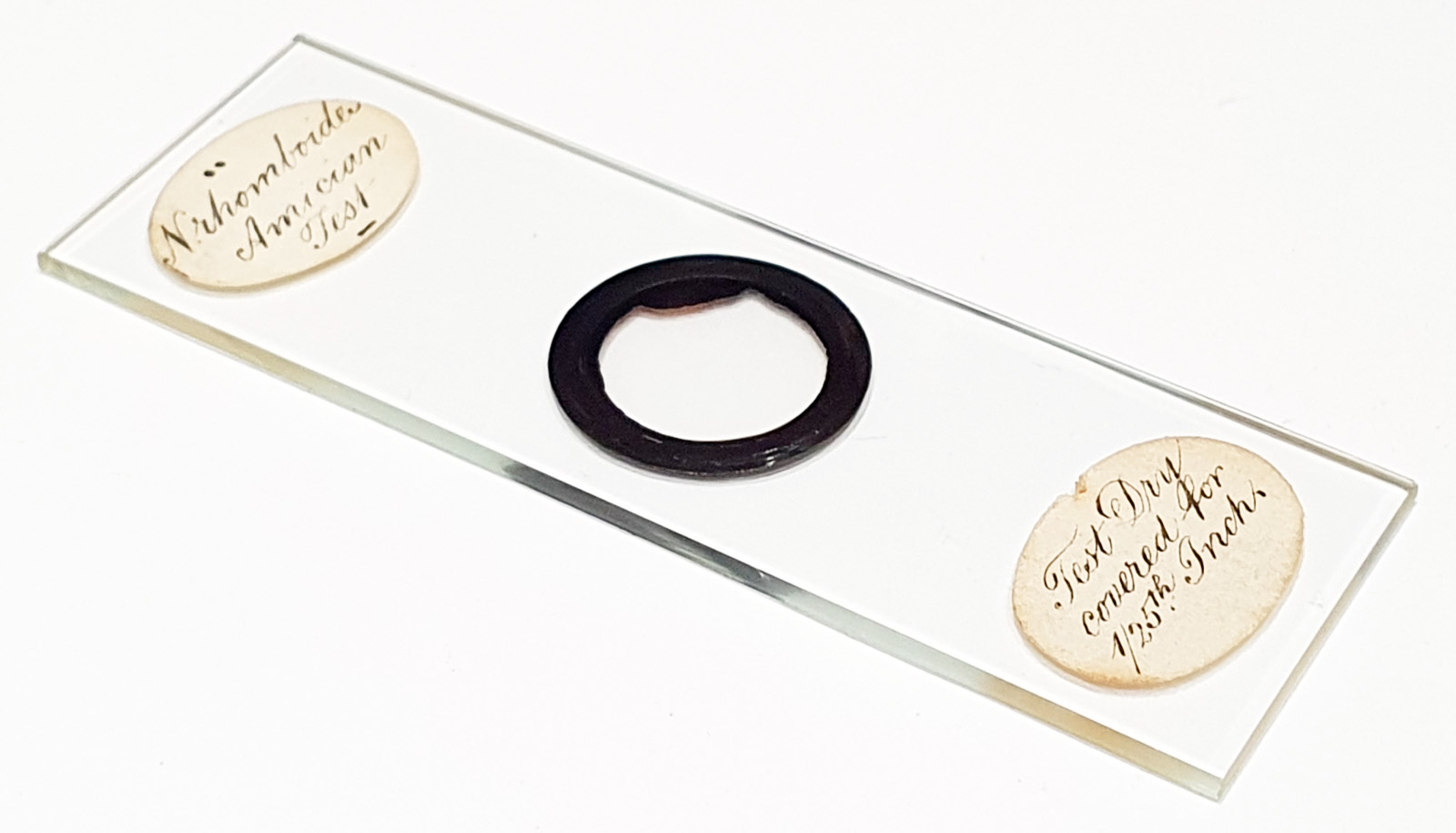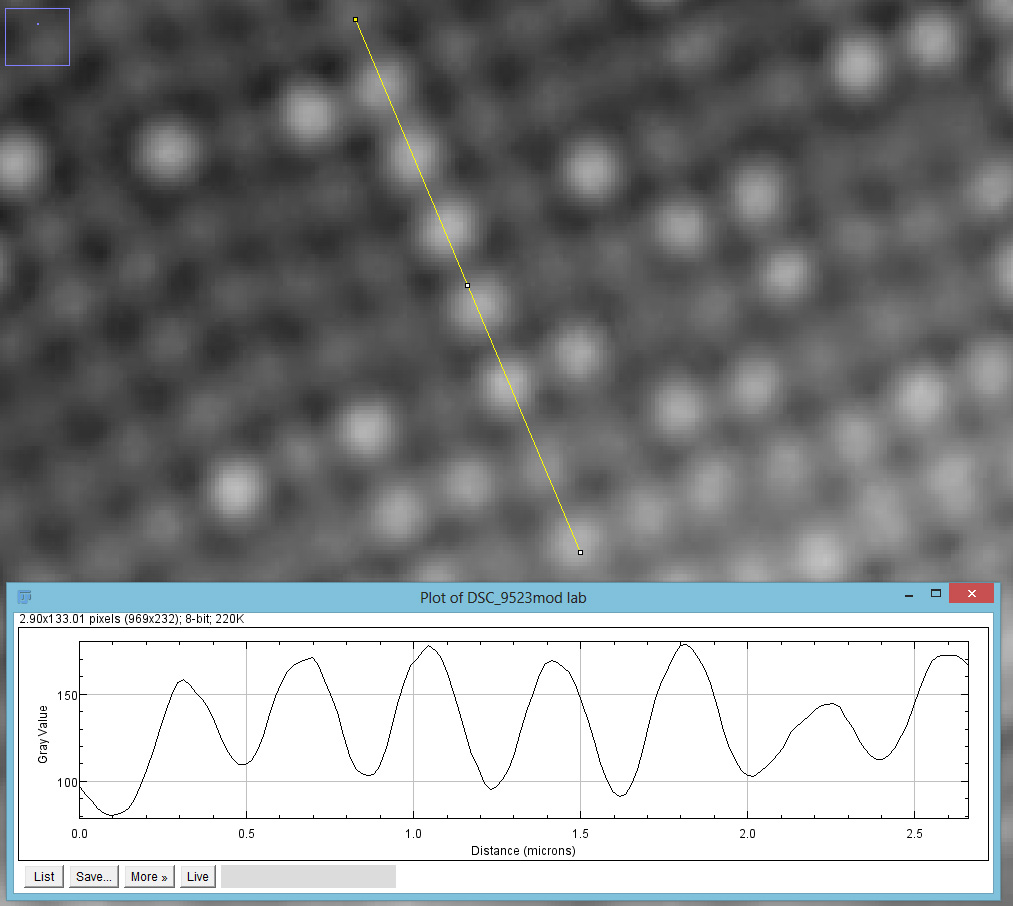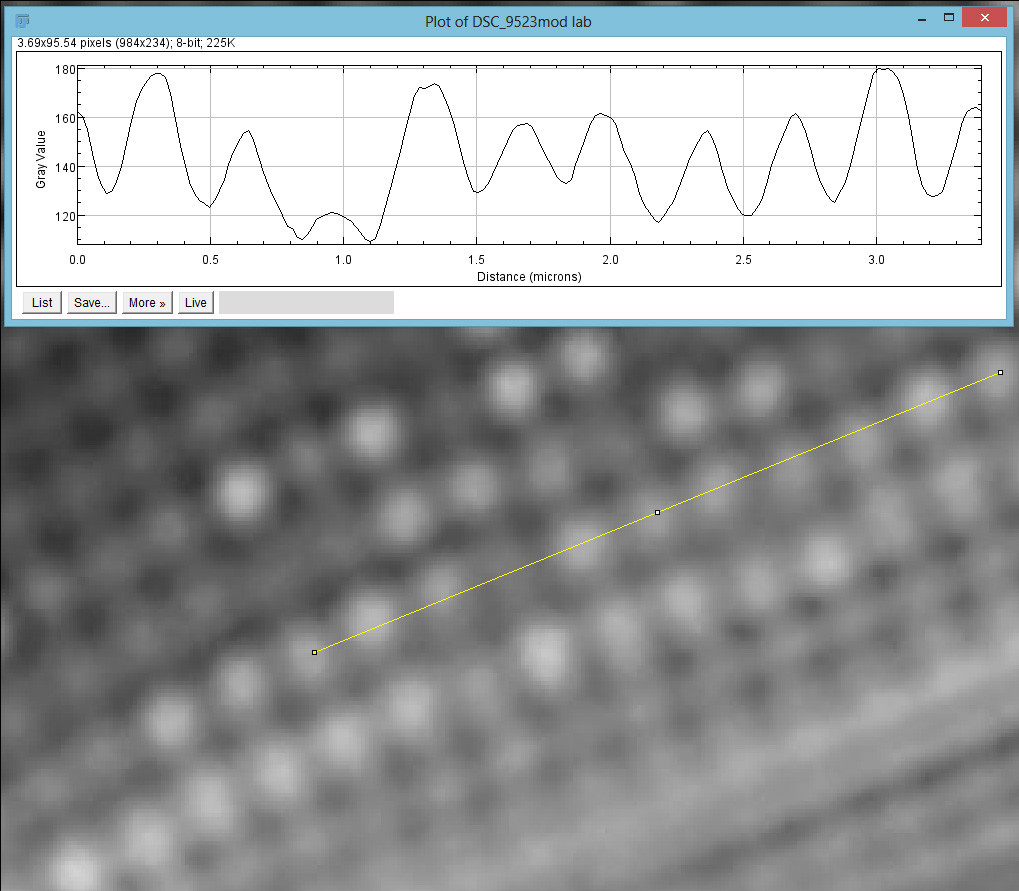



Amician Test slide with Navicula rhomboides (now known as Frustulia rhomboides). No location given. Made by Watson and Sons. Says “Test Dry covered for 1/25th Inch”. Olympus BHB microscope using 365nm LED light. 100x Leitz Pl Apo NA 1.32-0.60 objective, oil immersion, iris fully open. Reichert Neo 1.42/1.18 dark ground condenser, oiled. 2.5x Nikon CF PL photoeyepiece. Monochrome converted Nikon d850 camera. No stacking.
Puncta spacing 373nm. Striae spacing 344nm. I had expected this to imaged in circular oblique illumination with the iris on the objective fully open, but it never changed from dark ground. I suspect this is due to the dry mount.